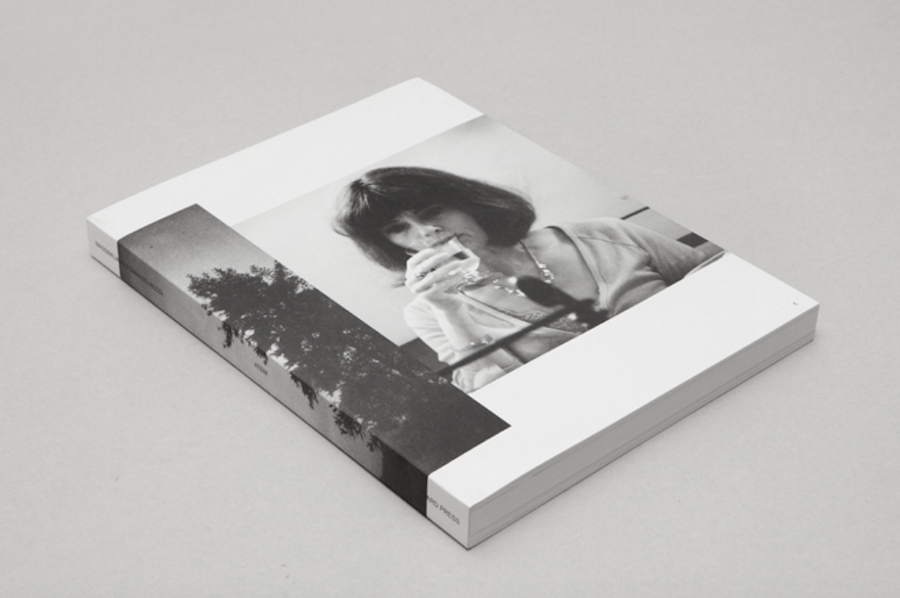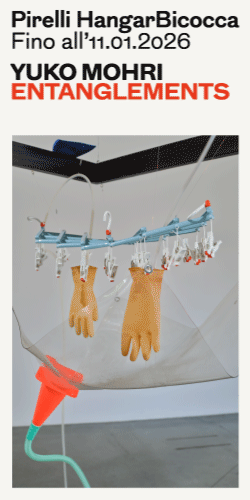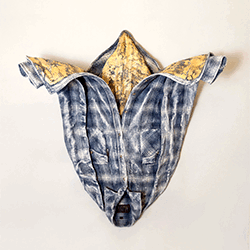[nemus_slider id=”50789″]

Sculptures, Alessandro Rizzi
23×32, 5cm | 112 pages | Hard Cover | 500 copies | 35€
Sculptures by Alessandro Rizzi is a book whose photographs were shot over the timespan of a few hours in Washington D.C. on December 13, 2014, and more precisely, during the civil rights protests that took place in the capital after the fatal shooting and civil unrest originating in Ferguson. Rizzi gives back a sharp and paradigmatic work on American society as a whole, and on the importance of a political demonstration that is a sign of the times and is coherent to its prescribed script, he plays with the fragments and cracks of what could be a historic moment for the struggle of the black community but that does not appear to be so: the sculptures at play in this event are part of a larger scenario that provides for their presence and contribution as actors both united and alone. This kind of structural weakness of the human element does not manifest in what is portrayed in the photographs which always appears to be plastic and structured, but instead lives within this visual paradox, as testimony to the distance in the union, and a fragility, despite the solidity, structure, and plasticity within each one of us.
Fermandoci ai dati possiamo affermare che Sculptures sia a tutti gli effetti un instant book le cui fotografie sono state scattate in poche ore a Washington il 13 Dicembre 2014, più precisamente durante la manifestazione di protesta sui diritti civili avvenuta nella capitale dopo le morti e gli scontri di Ferguson. Un altro dato importante di questo lavoro è il presupposto emotivo che ha portato l’autore alla decisione di partire per Washington DC: il suo rapporto con una donna afro-americana. Il corpo di lavoro dovrebbe essere quindi abnegato ad un preciso referente spazio temprale (peraltro un evento politico), e un presupposto d’innesco del lavoro molto intimo ma, nonostante ciò, l’autore riesce ad operare una sorta di liberazione da questi due forti elementi in gioco. Rizzi ci restituisce un lavoro tagliente e paradigmatico sulla società americana in toto, e sul significato di una manifestazione politica figlia del suo tempo e organica al suo prescritto copione, gioca con i frammenti e le crepe di quello che potrebbe essere un appuntamento epocale per la lotta della comunità nera ma che non ci appare come tale: le sculture in gioco in questo evento sono contenute in uno scenario più grande che prevede la loro presenza ed il loro contributo come attori uniti ma anche soli. Questa sorta di debolezza strutturale dell’elemento umano non si manifesta in ciò che è ritratto nelle foto che appare sempre plastico e strutturato, ma anzi vive in questo paradosso visuale, a testimonianza di una lontananza nell’unione, di una fragilità pur nell’essere sempre solidi, strutturati e plastici di ognuno di noi.

Distratti dal buio, Matteo Nasini
12x17cm | 352 pages | Perfect Binding | Soft Cover | 1 Colour (Black Silver Ink) | Offset | 350 Copies | 15€
Distratti dal buio by Matteo Nasini is first of all a stories assembly, and in this 352 pages journey we can find two different parallel lines of narration: the life as a daily source of visual energy and the dream as the exploratory part. The book contains five visual stories narrated by pictures, texts, draws and frames, and through the pages Nasini gives us back a sci-fi emotional world where the darkness is never an end, rather is a change and translation circumstance, we’re at the mercy of events, but also of our personal urgencies.
Distratti dal buio di Matteo Nasini, è anzitutto una narrazione e due linee parallele scorrono all’interno del flusso di queste 352 pagine: la realtà come fonte energetica di ispirazione, ed il sogno come componente esplorativa. Il libro è composto da cinque racconti visuali ed in un susseguirsi di immagini, testi, disegni e frame video, all’interno del volume prende vita un mondo indefinito, allo stesso tempo sci-fi e sentimentale, alienato e vago ma anche ancorato alla vita, dove il buio non è mai una fine, ma una condizione in cui si è distratti, trasportati, in balia degli eventi, ma anche delle proprie urgenze.

Taedium, Attilio Solzi
192 pages | 17x24cm | Paperback twist-stitching | Soft cover | Offset | 200 copies | 22€
Taedium is the first book by Italian photographer Attilio Solzi. The volume is the result of a research that the artist started three years ago about places and people who lives in the neighbourhoods around his studio that is also his house. Solzi works with set photography and handmade collages in an absolutely unconventional way, his grotesque and vernacular language shows us a dead-end view of the small-town Italian north areas. The volume includes also more then one hundred aphorisms written by the artist.
Taedium è il primo libro del fotografo italiano Attilio Solzi, il volume è il risultato di una ricerca triennale sulle persone ed i luoghi più vicini all’autore. I soggetti sono stati di volta in volta invitati nello studio dell’artista che è anche la sua casa per essere ritratti. Questa set photography grottesca e senza filtri formali, dal sapore dark e naiv allo stesso tempo, ci accompagna lungo un percorso di corpi usati ad uso e consumo, aforismi ricolmi di cinismo e disillusione, collages post-punk e uffici distrutti. Il tutto ci testimonia che, anche se stiamo parlando di una realtà creata ad hoc, dal rumore di fondo della realtà reale non c’è via d’uscita. Nel volume è presente una selezione di più di 100 aforismi scritti dall’artista.

New York Polaroids 1976—1989, Edo Bertoglio
232 pages | 18, 5x27cm | Paperback twist-stitching | Faux leather cover | Offset | 500 copies | 35€
New York Polaroids 1976—1989 is the first polaroid book by Swiss photographer and director Edo Bertoglio. A personal diary of the daily life of the New York downtown scene, with pictures of Arto Lindsay, Grace Jones, Maripol, Glenn O’Brien, Debbie Harry, Madonna, Andy Warhol and John Lurie, among others. With an essay by Mariuccia Casadio and an extract from the interview between Stefano Bianchi and Edo Bertoglio.
“Everything started between 5th and 34th Street, on a clear and cold afternoon, Maripol and I ran into one of those sudden strong gusts of wind that make you feel weirdly uncomfortable and estranged, kind of out of context. All of a sudden we hugged, with tears in our eyes, terrified by the metropolis, by our own loneliness and the lack of stable work. Attempting to overcome our own feelings, we walked right up to the 86th floor of the Empire State Building where the warmth of the light eventually welcomed us and showed to us the very essence of the city, the clouds, and the skyscrapers, the river and the ocean. It was certainly clear that New York was the only place where we wanted to stay. That city was going to be the luminous background of my photographs.” Edo Bertoglio
New York Polaroids 1976—1989 è il primo volume di sole polaroid, pubblicato da Edo Bertoglio. Il fotografo e regista svizzero ripropone in questo libro un diario personale di vita quotidiana sulla downtown scene newyorchese a cavallo tra la fine degli anni ’70 fino alla fine degli ’80. Tra snapshot di vita comune, parties, vedute, si incastonano ritratti di amici e degli artisti più importanti di quella New York tra cui Arto Lindsay, Grace Jones, Maripol, Glenn O’Brien, Debbie Harry, Madonna, Andy Warhol e John Lurie. Il volume contiene un saggio di Mariucccia Casadio ed un estratto da un’intervista di Stefano Bianchi all’autore.
«Tutto è iniziato fra la 5a e la 34a Strada, in un sereno, gelido pomeriggio. Maripol ed io, ci siamo imbattuti in una di quelle correnti d’aria che ti fanno improvvisamente sentire a disagio, fuori posto. In quel preciso istante, ci siamo abbracciati con le lacrime agli occhi terrorizzati dalla metropoli, dalla nostra solitudine, dalla mancanza di un lavoro stabile. E allora, quasi a voler sfuggire da tutto e da tutti, siamo saliti all’86° piano dell’Empire State Building e il calore della luce ci ha spalancato dinnanzi agli occhi la materia della città, i suoi grattacieli, i fiumi, l’oceano, facendoci capire che era il luogo dove volevamo e dovevamo vivere. New York, d’ora in poi, sarebbe diventato il luminoso sfondo delle mie fotografie». Edo Bertoglio

Atem, Massimiliano Tommaso Rezza
300 pages | 24, 5×33, 5cm | Paperback twist-stitching | Soft cover | Offset | 500 copies | 35€
In agreement with the author, who does not feel his production strictly related to the book format and who thinks photography is a mutable and manifold matter, we publish a book free of the precepts that habitually regulate the flux of its content and the usual relations between the photographs and the pages. The volume’s content does not derive from a sequence of images designed according to aesthetic rules, based on formal and conceptual balance, but it has been obtained through a purely random process lacking of any type of selection refinement.
All the photos in the book rigorously respect the numeric order of the photographic source, that is the author’s archive made of thousands of images, and are presented consecutively respecting their original format regardless of the book’s page dimensions. At a later moment in the book’s design, the individual pages were randomly shuffled without caring about the page bleed or the overlapping between the photographs. The book that results from this process becomes a container that houses the images without any control over them but granting them the uncommon freedom to create new ones.
Di concerto con l’autore che non sente legata la sua produzione alla forma libro e che ritiene la fotografia essere materia mutevole e multiforme, pubblichiamo un libro slegato dai precetti che da sempre regolano il flusso del suo contenuto ed il rapporto tra la fotografia e la pagina. Il contenuto del volume non è frutto di una sequenza creata in base a leggi estetiche, di equilibrio formale o concettuale, ma dipende da un processo assolutamente casuale e privo di ogni forma di editing.
Tutte le fotografie presenti nel libro rispettano rigorosamente l’ordine numerico presente nell’archivio fornitoci e vengono riproposte consecutivamente nel loro formato originale ignorando il formato della pagina. In una seconda fase della progettazione le singole pagine sono state casualmente rimescolate senza tenere conto delle possibili smarginature o sovrapposizioni perché il libro in questo caso è da considerare come un contenitore che ospita tutte le immagini senza dominarle e lasciando che esse stesse ne creino di nuove.
Ecco invece le prime 3 pubblicazioni della collana “Black Books”.
La collana è stampata solo in nero, con solo artisti che non si occupano di fotografia.
“Ci interessa capire come, chi non fa della fotografia il suo principale interesse, si confronti con la produzione di immagini ad hoc per l’edizione”.

Black Books Vol.1, Giandomenico Carpentieri
60 pages | 22, 5x32cm | Unbound | Digital print | 100 copies | 15€
The first volume presents the work of Giandomenico Carpentieri (Rome 1977), he works in publishing and graphic design.
Il primo volume presenta una serie di immagini prodotte da Giandomenico Carpentieri (Roma 1977), designer la cui ricerca si incentra sulla grafica e sull’editoria contemporanea.

Black Books Vol. 2, Michele Manfellotto
60 pages | 22, 5x32cm | Unbound | Digital print | 100 copies | 15€
The second volume presents an extract from the video diary by Michele Manfellotto (Rome 1977), he’s a writer and visual artist.
Il secondo volume presenta una serie di immagini tratte dal diario video di Michele Manfellotto (Roma 1977), scrittore e artista visivo.

Black Books Vol. 3, Nicola Pecoraro
60 pages | 22, 5x32cm | Unbound | Digital print | 100 copies | 15€
The third volume presents a series of images produced by Nicola Pecoraro (Rome 1978), his artistic research is focused on sculpture, drawing, video and photography.
Il terzo volume presenta una serie di immagini prodotte da Nicola Pecoraro (Roma 1978), artista che indaga diversi media tra cui scultura, disegno, fotografia e video.









